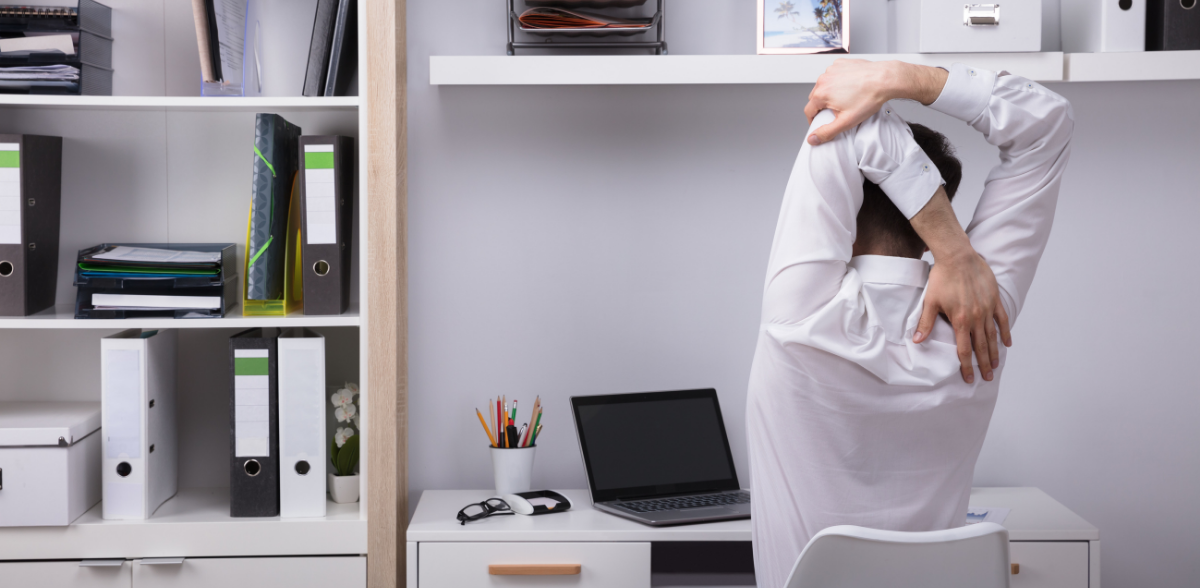
We've all been there. Someone recommends you do an exercise or try changing something that should you sort a particular problem.
For the first set of exercises you convince yourself that you’ll stick to them and do them regularly. You might even make it through the first day doing them as often as you’re supposed to. But then you have a busy day, or you miss a set as you forget. And then sure enough, a day goes by without you doing them, and then another, and then it’s been a few days since you did them.
It’s hard to get into a new routine, or form a new habit for things like exercises. Even if it’s something that you know will help you, it’s still easier not to do it.
Exercises from Pain Map or a Physio
As Physios, we’ve seen so many patients commit to doing their exercises, desperate to feel better. But then we see them again, and nearly always those exercises haven’t quite become a habit. We get it. Life get’s in the way. People are busy with work, children and everything else life chucks at you. We barely have time for the things we are already doing, let alone introducing something else.
The same will be true for the exercises you’ll get from Pain Map. You work through our questions, get all our advice and recommendations on how to cope with your pain, and do a few sets of exercises. But then, like lots of other new habits, they face very quickly.
However, for the exercises to work, it’s pretty likely that you actually need to do them. Although there is some evidence that just thinking about doing exercise can have some benefits, we’re still of the opinion that actually doing them probably works better!
Creating a habit
There are a few keys to making a new habit that we want to talk about now. It can actually be easier than you think, but we often go about it the wrong way. We commit to making a big change and then beat ourselves up when we don’t stick to it. We’re not looking for a big change. We just want people to do the exercises we recommend, because we know they’re much more likely to help you if you actually do them.
Make it easy
Tip number one for getting into the habit of doing your exercises we’ve recommended (or any other habit) is to make it easy to do. If you need a bit of equipment, keep it somewhere obvious. Don’t hide it away out of sight. If you need some space, work out where you can do the exercise and make sure you go there often during the day. If you don’t want other people to see you, work out where you can go to do the exercise where people won’t see.
Taking out as many obstacles as possible before you start makes it more likely that you’ll start the exercise, and that’s a huge part of the batter.
Attach it to a habit you already have
Try to attach your exercise to something you already do. For example, you could do an exercise every time you boil the kettle, or after brushing your teeth, or perhaps after going to the toilet. Adding it to something you’re doing anyway, makes it more likely you’ll do it because we know those opportunities / habits will come up in the day. You’ll do them automatically, and so you’re not creating a new habit as much as just adding something to it.
Make an obvious prompt
Attaching to a habit you already have also acts as a good prompt. In order for you to do your exercises regularly, at least initially, you’ll need something to remind you. Because it’s a new part of your routine, you won’t remember unless there is something to prompt you to do it.
So commit to doing your exercises each time your prompt comes up. Perhaps that’s, “After I’ve put the kettle on to boil, I’ll do one of my shoulder exercises”. Or, every time I leave the bathroom, I’ll do one stretch for my leg”.
Make it small
Getting into the habit of doing something loads of times in a day, or spending lots of time on it, seems a bit overwhelming. So, you might notice that the examples of prompts we gave above we simply doing one of an exercise. You can do more, but you need to commit to doing one of the exercise.
As we’ve already said, and as you’ll recognise, it’s doing the first one that’s hard. Once you start, you’ll probably do a few, but you have to get that first one done. So, when you’re introducing a new habit, make it small. Commit to doing one of them.
Celebrate
This is where lots of people fall down. They think that managing to do one or two exercises isn’t anything to celebrate. However, compare that with not doing any, or compare it to the huge majority of people who don’t do any exercises, and you start to see that even one exercise is worth celebrating. So, when you do you one shoulder exercise after putting the kettle on to boil, give a little fist pump, or shout “Yes” or something that makes you feel good for doing what you said you would.
Why? Because if you get a good feeling each time you do the exercise, guess what? You’ll keep doing it. In fact you may even start to look for times when you can do more of them.
It’s ok, I don’t need all that
You might be thinking, that you don’t need to make your new exercises easy, attach them to something you already do, make a prompt, make it small and celebrate it. That might be true. If the pain is such a good motivator for you then that might keep you going to start with. But the problem is, the pain will start to reduce. And as it does, your motivation goes. Then, the pain starts to come back.
We’ve seen it so often in clinic. Patients come in and say they were doing really well, so they didn’t do as many exercises and the pain came back.
That’s why you need a plan for getting your exercises done and making them part of your daily routine. We have taken a lot of care putting these exercises and our advice together. The aim is to help people who are in pain, and we know, that to increase the chances of your following the advice, you need to make a plan.
So, when are you going to do your exercises? How are you going to make them easy for you to do? How are you going to celebrate when you do them?
I haven’t got any exercises yet!
If you haven’t got your road map to pain relief yet, then visit our symptom checker, work through the questions and within a few minutes, you can have all our advice along with the best exercises to start relieving your pain.


